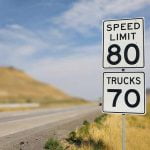Driving Safely Through Highway Work Zones
For your safety and the safety of other motorists and highway workers, Insurance Companies, and the National Work Zone Safety Information Clearinghouse and the Federal Highway Administration offer the following tips for driving safely through highway work zones.
Expect the unexpected in any work zone along any road, major or minor. Normal speed limits may be reduced, traffic lanes changed, and people and vehicles may be working on or near the road.
Obey the flagger’s directions. In addition to other warning signs, a “Flagger Ahead” warning sign may be posted in the work zone. When you see this sign, stay alert and be prepared to obey. In a work zone, flaggers have the same authority as a regulatory sign and a police officer directing traffic. You can be cited by police for disobeying their directions.
Merge as soon as possible. You may see flashing arrow panels and “Lane Closed Ahead” signs. Don’t wait until your lane is closed to merge. If everyone cooperates, traffic moves more efficiently. Motorists can help maintain traffic flow and posted speeds by moving to the appropriate lane at first notice of an approaching work zone. Lane blocking is illegal and violators will be cited.
Leave extra following distance between you and the vehicle in front of you. The most common crash in a highway work zone is the rear-end collision. The amount of space required to provide adequate stopping time will increase the faster you are driving. Remember, your CDL manual says one second is required for every 10 feet of your vehicle’s length.
Keep a safe distance between your vehicle and traffic barriers, construction equipment, vehicles and workers. Just like you, highway workers want to return home safely after each day’s work. Watch for inattentive motorists and highway workers.
Observe the posted signs until you see the one that says you have left the work zone. Some work zones, like painting, road patching and mowing, are mobile, moving down the road as the work is finished, so you may not see the workers immediately after you see the warning sign.
Expect delays, plan ahead and try an alternate route. Regardless of the length of your trip, prepare for some sort of road construction. Often, highway agencies will suggest a detour to help you avoid the work zone entirely.
Always watch the traffic conditions one mile down the road to better prepare for slowed or stopped traffic and traffic pattern changes you are approaching.
It is important for you and all of the other road users to safely return home to your family and friends.

This article is Provided by Sunlight Logistics Inc





